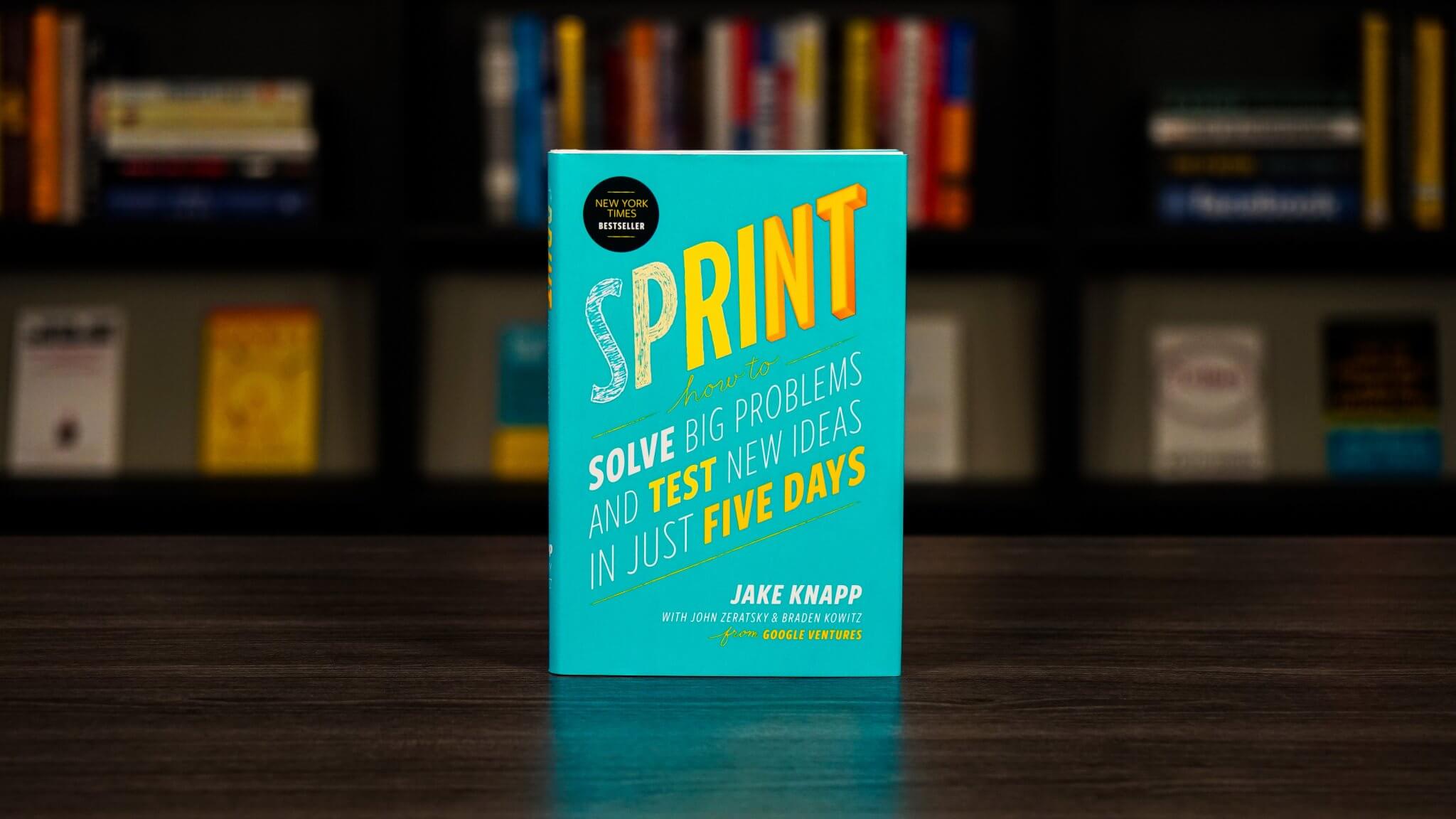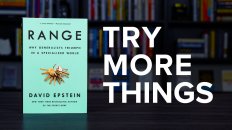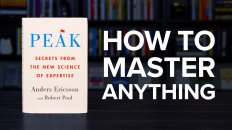Product development can quickly become overwhelming. It’s easy to get stuck trying to do too much all at once. Sprint reveals Google Ventures’ unique five-day process for answering crucial questions through prototyping and testing ideas with customers.
It’s for founders, product managers, or anyone else interested in rapid prototyping of products, services, or experiences. If your team needs to solve a big problem, break out of a rut, or make quick progress on a difficult project – this book is for you.
1. Start At The End, Solve The Surface First
When a big challenge comes along it’s natural to want to solve it right away. But it’s important to slow down, share what you know, and prioritize so you don’t waste time on the wrong aspect of it. Start with the end in mind and get clear on what you want to achieve and then work backwards.
Aim to solve the surface first. It’s where your product or service meets the customer. Human beings are complex and fickle, so it’s impossible to predict how they’ll react to a brand-new solution. Focusing on the surface allows you to move faster and answer big questions before you commit to execution.
Ask yourself questions like: If you could jump ahead to the end of your sprint, what questions would be answered? If you went six months or a year further into the future, what would have improved about your business as a result of this project?
2. Remix And Improve Existing Ideas
Often the ideas that spark the best solutions come from similar problems in different environments. Have sprint team members search for existing ideas that you can later use to inform your solutions. They can be from other products, from different domains, or from within your own company.
Once ideas have been gathered, team members can present them to the team in three-minute “Lightning Demos” to showcase their favorite solutions. Don’t debate or decide which ideas should be discarded and which are worth remixing and improving. Figure that out later during the solution sketching process.
3. Sketching Solutions Is A Great Equalizer
Sketching is the fastest and easiest way to transform abstract ideas into concrete solutions. Absolutely anybody can sketch a great solution. Everyone can write words, draw boxes, and express their ideas with the same clarity. Once your ideas become concrete, they can be critically and fairly evaluated. It’s the quality of the solutions that matters, not the artistry of the drawings.
Individuals working alone generate better solutions than groups brainstorming out loud. It allows for everyone to do research, find inspiration, think about the problem, and create unique ideas. When the whole team works in parallel they’ll generate competing ideas without groupthink.
There are a few important rules to keep in mind: make it self explanatory, keep it anonymous, ugly is okay, words matter (strong writing), and give it a catchy title (since your name won’t be on it). Each person is responsible for creating one solution sketch to later be considered by the team.
4. Choose The Best Solution Sketches
Solution sketches should be evaluated all at once, critiqued all at once, and decided upon all at once. This is all done the morning after the sketches are produced, so first impressions get the benefit of fresh eyes. Here are the five steps to go through in order to decide which solutions should be prototyped:
1. Art museum: Put the solution sketches on the wall with masking tape.
2. Heat map: View solutions in silence & use dot stickers to mark interesting parts.
3. Speed critique: Discuss the highlights of each solution and add sticky notes.
4. Straw poll: Each person chooses one solution, and votes for it with a dot sticker.
5. Supervote: The Decider makes the final decision, with more stickers.
In the real world, creators aren’t there to give sales pitches. Ideas must stand on their own. For this reason, it’s recommended that you don’t talk during the process. Simply look at each sketch, put dog stickers beside the parks you like, and write any questions you have on sticky notes below the sketch.
This method isn’t perfect, but it’s speedy. That speed helps with the larger goal of getting real world data from the sprint’s test. It will be that data that leads to the best decisions of all.
5. Create A Realistic Prototype
Prototyping is all about creating illusion. You’ve got an idea for a great solution. Instead of taking weeks, months, or even years to build that solution, you’re going to fake it in one day. You could take a longer time to build a better prototype, but that would only slow down the learning.
Speed may not matter if you’re on the right path, but not every idea is a winner. And the longer you spend working on something the less likely you’ll be to accept negative test results. Remember, one of the goal of a sprint is to test and validate ideas before making a large commitment of further time and energy.
The “prototype mindset” has four simple principles: (1) you can prototype anything, (2) prototypes are disposable, (3) build just enough to learn, and (4) the prototype must appear real.
For many physical-product sprints, you may not need to prototype the product. Instead you can prototype the website, video, brochure, or slide deck that will be used to sell the device.
6. Gather Customer Reactions, Not Feedback
When it’s time to showcase your prototype to customers, you’ll want them to react naturally and honestly to what they believe is a finished product or service. Such reactions are solid gold, but feedback is worth pennies on the dollar. If the illusion of a real product is broken, customers switch into feedback mode. They’ll try to be helpful and think up suggestions instead of providing genuine reactions.
In the real world, your product will stand alone—people will find it, evaluate it, and use it without you there to guide them. Give them nudges, but don’t tell them exactly what to do. Seeing where customers struggle and where they succeed is useful—but hearing their thoughts as they go is invaluable. Ask questions to help them think aloud: “What do you think of that?”, “What are you looking for?”, “What would you do next?”
After your first sprint, you might notice a shift in the way your team works. You’ll look for ways to turn discussions into testable hypotheses. You’ll look for ways to answer big questions in a week.
After The Sprint Book Summary

This book summary of Sprint covered five valuable insights for solving difficult product challenges. However, it’s not meant to be a substitute for reading the book. That’s because the original text provides a much richer and more detailed learning experience.
So if you’re a founder, product manager, or anyone else interested in rapid prototyping of products, services, or experiences, consider picking up a copy of the book. Sprint is available from Amazon and Apple Books.
Looking for something else? Consider checking out the best product management books or the best startup books to find your next great read.


